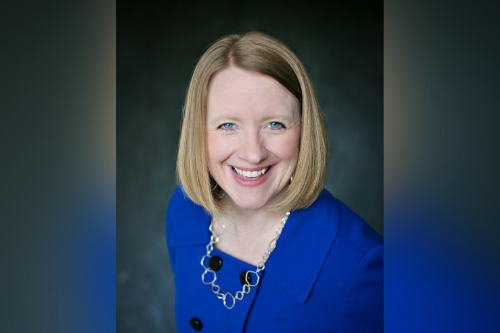

Monica Ningen (pictured) remembers when someone helped her discover an unconscious bias that she wasn’t even aware she had.
“Years ago, a really close collaboration partner of mine helped me uncover that I have a negative bias towards applicants that walk slow,” she said. “For those of you that have ever seen me outside the Zoom world, I’m only five feet tall so I have to run to keep up to most people when they walk.”
The Toronto-based president & CEO of Swiss Re, Canada and English Caribbean, told her story as part of a fireside chat at Women in Insurance Canada, a virtual event celebrating diversity, equity and inclusion among rising and established leaders in the industry.
“The speed a person walks has nothing to do with their competency, yet walking slow to an interview left me feeling agitated and I would come out with a very different view of those applicants than other people,” she continued.
“So, I now have something in place that I call ‘the nudge,’ and I meet applicants in a conference room or have someone bring me to their office. That’s just one example… Do you have an unconscious bias that you need to address? Is there a nudge that you can put in place? Is there something within the process or within the system that you can put in place to counterbalance that unconscious bias?”
By the very nature of the insurance business, she said, we’re using knowledge and expertise to pick the clients to partner with and the best risks to insure. This process of using our knowledge and expertise requires us to tap into the biases that we all have.
“Where we run into challenges is where we have unconscious biases that lead us to build teams that look like us and act like us,” she said. “So, ensuring hiring managers are thinking about this is really important.”
Ningen started the discussion by saying the industry has to recognize the discussion has shifted from whether diversity in the workplace is beneficial to how to achieve it – a subtle shift, but an important one.
And sometimes learning how to achieve those diversity goals begins with the beginning; that is, it begins at the hiring process, from rooting out biases in job descriptions to ensuring that interviewing teams reflect the kind of diversity you want to see in the pool of applicants.
“Take a little more time and look harder,” she said. “There’s likely a qualified candidate that fits your job description. Look for trusted advisors in your organizations that can challenge managers if there’s a trend of hiring people who look and act like the manager.”
Or course, the job of diversity isn’t finished once the applicant becomes a new hire; it’s up to everyone on the executive side to build trust with employees and lean into mentoring and sponsorship programs that help everyone break down their biases and get to know and support each other.
“There are a few things we can do as individual contributors,” she said. “One of them is for each of us to really reflect on how we spend our own time and who we spend our time with - from the authors that you read, to the people you invite to dinner.”
Another thing women in particular can do, she said, is become another woman’s cheerleader in the workplace.
“Encourage the women around you to step into bigger roles and responsibilities,” she said. “Share your own aspirations, and also encourage others around you to do the same. Women often struggle to verbalize their own ambitions, and without a stated career goal women aren’t often thought of and considered for a role.”
For its part, Ningen said earlier this year Swiss Re launched an inclusive culture mentoring program where each of the Americas executive team members selected a diversity factor that they were either uncomfortable with or felt uninformed about and were then matched with a diverse mentor.
“This created a powerful relationship with pairs of people that may not have naturally found each other and opened up a dialogue with leaders in our organization at a deeper level than what we had seen before,” she said.
“It’s really about analyzing your workforce and thinking about where you have the biggest need and where can you make the biggest impact. I believe as an industry we’ve come a long way, but we have a lot of work to do.”
